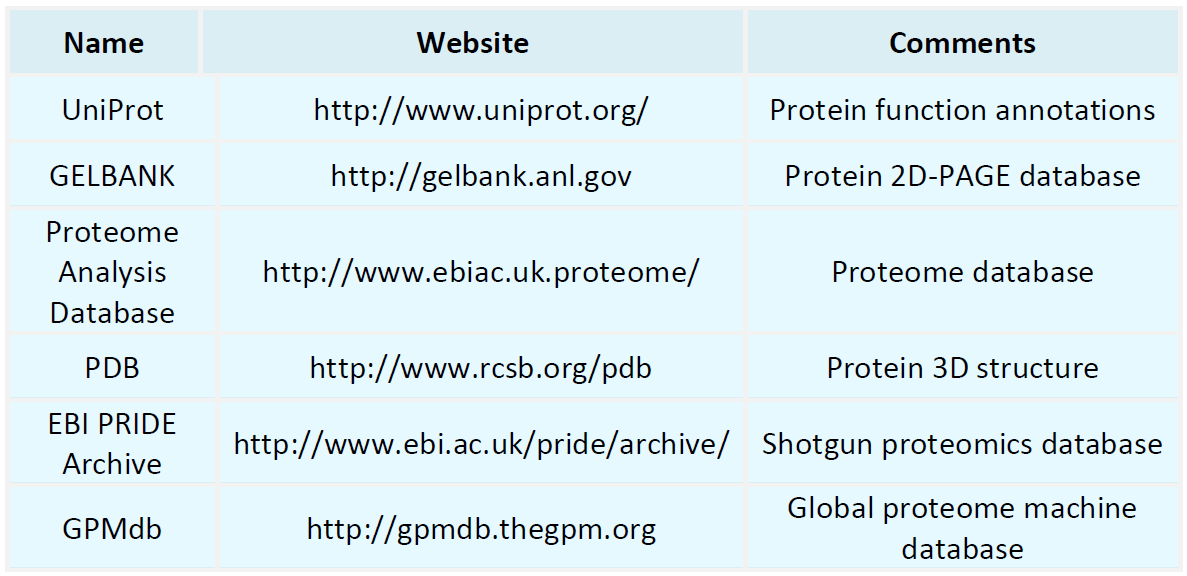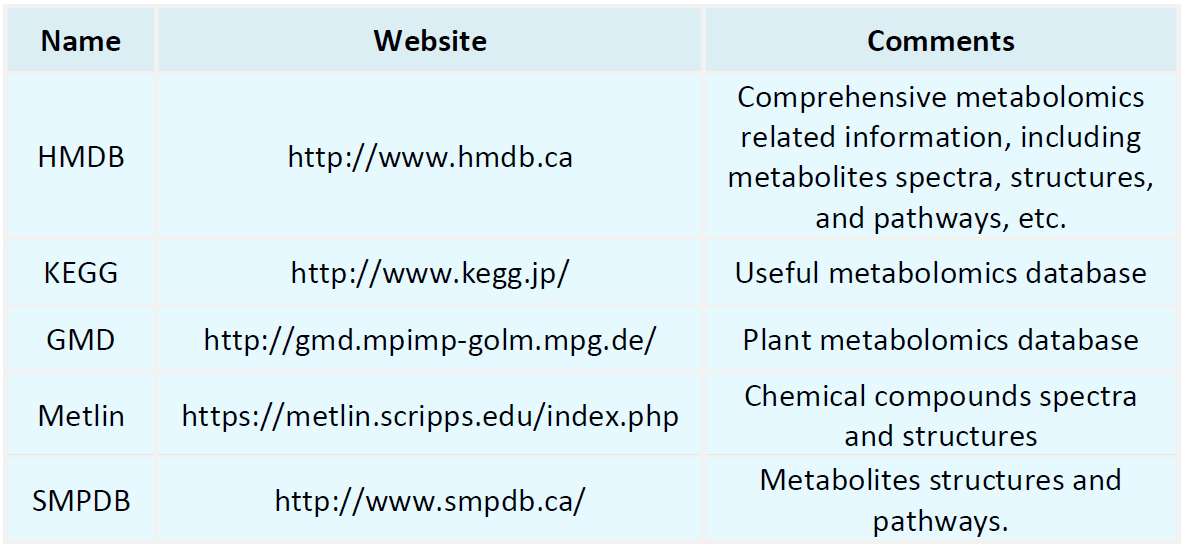Resources
Proteomics Databases

Metabolomics Databases

-
In the field of proteomics analysis, there are various methods available for protein amino acid composition analysis. Infrared spectroscopy and mass spectrometry are commonly used methods for protein amino acid composition analysis, each with its own advantages and applicability.
-
• Revealing the Complete Profile of Proteins in Biological Systems through Proteomics Sequencing
Proteomics sequencing methods include mass spectrometry, protein microarrays, and second-generation sequencing. Mass spectrometry is the most commonly used proteomics sequencing technique.
-
• Characterizing Bioproducts through Protein N-Terminal and C-Terminal Sequencing
Protein is an important target in the research and development of biological products, and the N-terminal and C-terminal sequences of proteins play a crucial role in their structure, function, and characterization. The protein N-terminal and C-terminal sequencing provides a key tool for analyzing biological products.
-
• Interpreting Protein Secondary Structure by Improving Circular Dichroism Sample Processing
The protein secondary structure is an important component of their structure, including α-helix, β-sheet, and random coil. Circular dichroism is a widely used technique in protein research, which provides important information about the secondary structure by measuring the absorption of proteins to circularly polarized light.
-
• Peptide Sequencing Revealing Diversity and Functional Networks in Biological Systems
Peptides are small molecular chains composed of amino acids, with rich structural and functional characteristics. Through peptide sequencing technology, we can reveal the precise sequence of peptides and explore the diversity and functional networks in biological systems through analysis of peptide sequence.
-
• Unraveling Protein Conformation Through Circular Dichroism Spectroscopy
Revealing the protein conformation is of great significance for understanding biological processes, drug development, and disease treatment. In the field of protein structure, circular dichroism spectroscopy is a commonly used and powerful tool that provides crucial information about protein conformation by measuring the protein's absorption of circularly polarized light.
-
• Bioinformatics Analysis of Protein Sequencing
Bioinformatics analysis of protein sequencing is an important tool to explore life processes. By analyzing protein composition, structure and function information, hidden rules in biological systems can be revealed. With the continuous development of technology and the improvement of methods, bioinformatics analysis of protein sequencing will play an increasingly important role in life science research and drug development.
-
• The Importance and Common Methods of Protein Quantification Analysis
Protein quantification is crucial for understanding biological processes, studying disease mechanisms, and drug development, as proteins are important functional molecules in organisms. Selecting appropriate protein quantification methods and optimizing them are key steps to ensure accurate and reliable results.
-
• Revealing the Biological Functions of Carbohydrates Through Polysaccharideomics
Polysaccharideomics is an important research field focused on the study of polysaccharides, which play a crucial role in biological systems. Traditionally, researchers have primarily focused on proteins and nucleic acids, paying less attention to carbohydrates. However, with the rise of polysaccharideomics, we have gradually realized the significance of carbohydrates in cell signaling, disease occurrence, and drug development.
-
• The Role of Circular Dichroism in Determining Protein Secondary Structure
Understanding the secondary structure of proteins is crucial for unraveling their functions and properties. In the field of protein structure in biopharmaceuticals, circular dichroism spectroscopy is widely used to determine protein secondary structure and plays a key role in unraveling the folding mysteries of proteins.
How to order?







